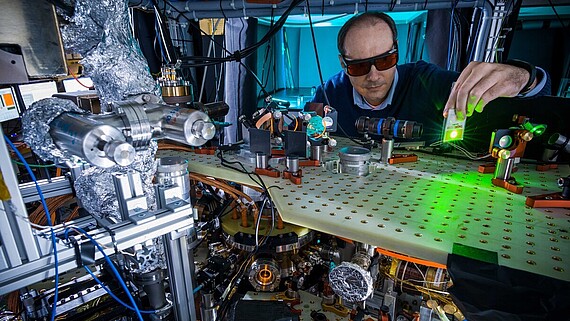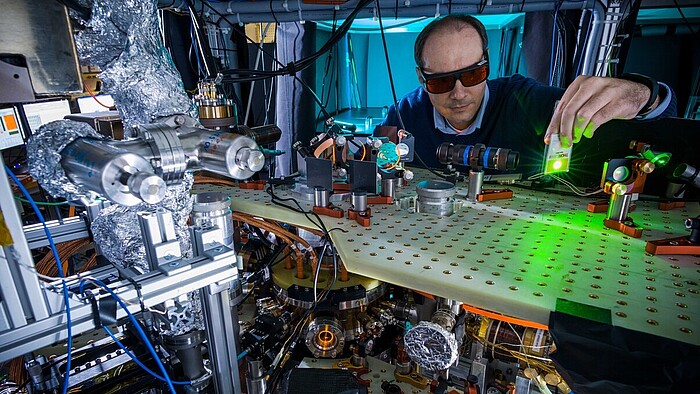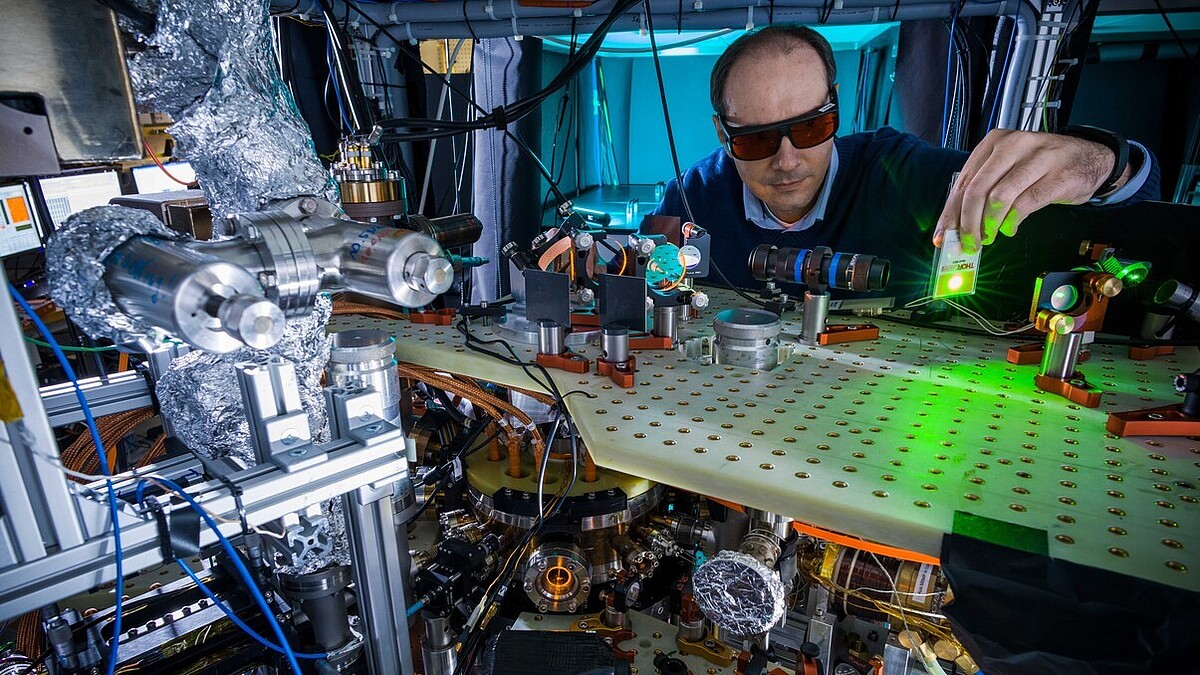

 ©
Jan Hosan/DQ-mat
©
Jan Hosan/DQ-mat
Introduction
Quantum gases of ultracold polar molecules offer significant potential for the study of strongly interacting dipolar quantum many-body physics, including dipolar spin and Hubbard Hamiltonians. Characterised by their permanent electric dipole moments, these molecules offer a unique opportunity to realise, understand and exploit interactions beyond the accessible regime with particles possessing a magnetic dipole moment. This project focuses on the realisation and study of these non-classical quantum many- body states using ensembles of polar bosonic NaK molecules loaded into 3D optical lattices
Results
During the second funding period, we focused on the stability of molecular ensembles - a crucial prereq- uisite for the flexible implementation of lattice models with polar molecules. We achieved record-high phase-space densities of 0.6 for ultracold bosonic molecular ensembles and identified tetramer forma- tion in the high quantum state density molecular system, followed by photoinduced processes which are considered responsible for strong two-body losses at the universal limit. During our investigations, we focused on determining the lifetime of the tetramers and found that theoretical predictions drastically underestimated this important quantity by almost three orders of magnitude compared to the actual lifetimes observed in our experiments. In addition, we studied collisions between potassium atoms and NaK molecules and identified specific spin states that show negligible loss in collisions with molecules. Remarkably, the two-body loss rates in these collisions were found to be more than four orders of mag- nitude away from the universal limit.
Our current efforts are directed towards the implementation of methods to control molecule-molecule and atom-molecule collisions. We have proposed a two-photon optical shielding mechanism to suppress the strong two-body loss in molecule-molecule collisions, and identified Feshbach resonances to precisely control atom-molecule collisions. Overall, our research has provided valuable insights into the behaviour of molecular ensembles, shedding light on universal loss mechanisms and collision dynamics. These findings pave the way for improved control and manipulation of quantum gases in optical traps, opening up exciting possibilities for further evaporative cooling of the molecular ensemble to quantum degeneracy and studies of lattice-based dipolar quantum many-body physics
Publications
Showing results 1 - 9 out of 9
Project leader
30167 Hannover
30167 Hannover
30167 Hannover
Staff
30167 Hannover
30167 Hannover

